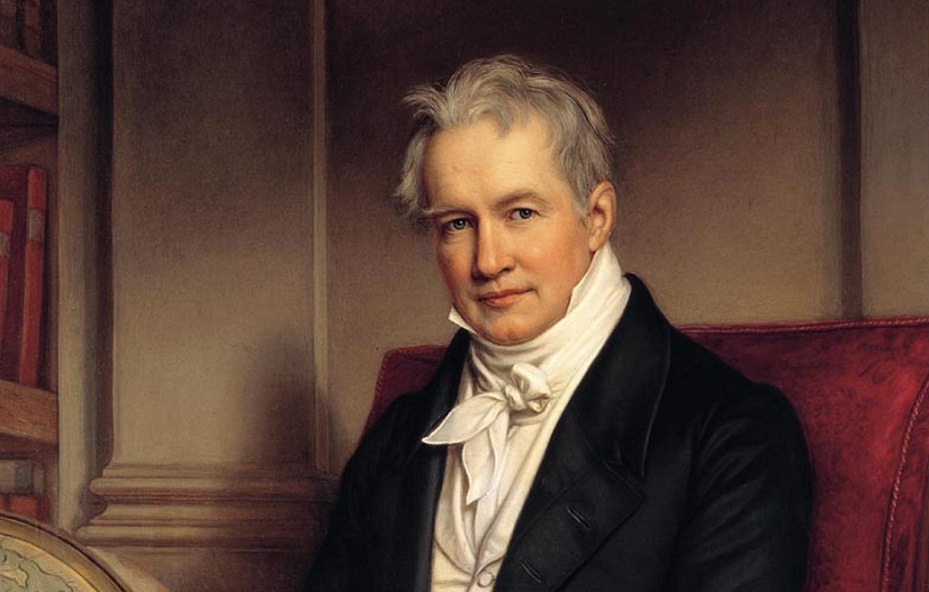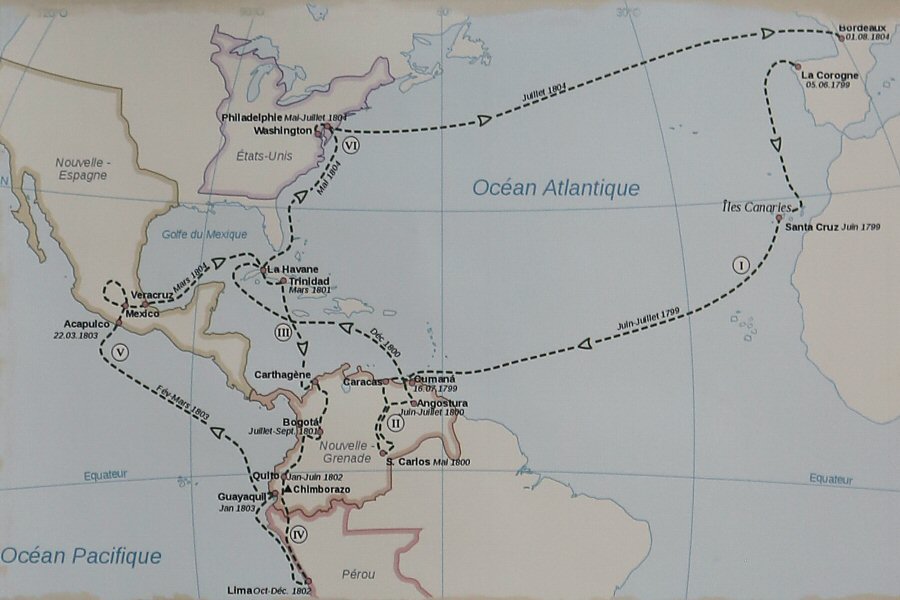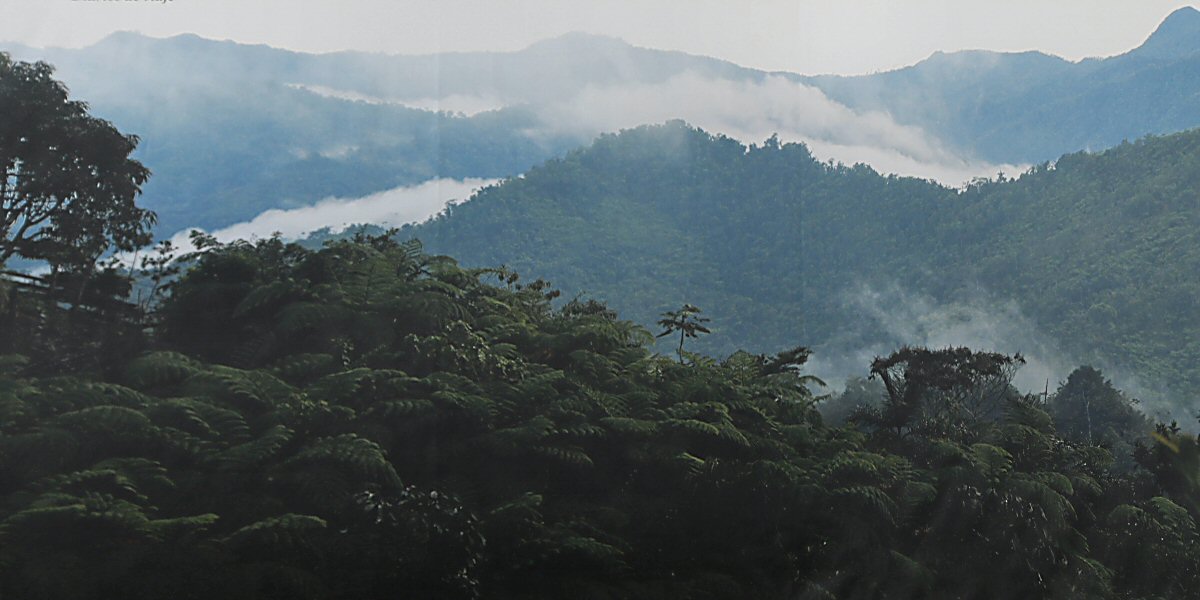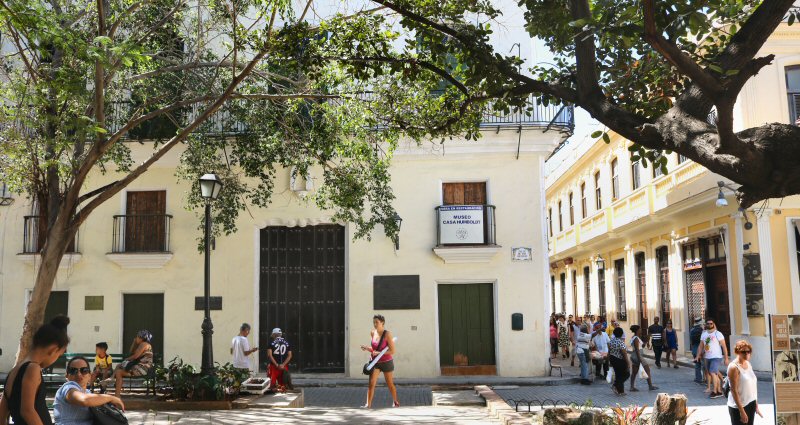
Friedrich Wilhelm Heinrich Alexander von
Humboldt (1769-1859) was a German explorer, naturalist, one of
the founders of the modern geography and biogeography, and a
philosopher. He was fluent in English, Spanish and French.
Between 1799 and 1804, Humboldt
traveled extensively in Latin America, exploring and describing
it for the first time from a modern scientific point of view. He
collected botanical material and biological species. At the end
of his life he accumulated about 60.000 plants, including thousands of
species never described before. His description of the journey
was written up and published in an enormous set of volumes over
21 years.
 Humboldt was one of the first people to propose that
the lands bordering the Atlantic Ocean were once joined (South
America and Africa in particular). He studied the ocean currents
of the western coast of South America, known today in his honor
as the Humboldt current. He investigated the American volcanoes
and recorded their eruptions. He measured the decrease in
magnetic intensity, as he went from the poles to the Equator, as
well as the rate of the temperature drop with altitude. He
observed a rich meteor shower, and his report increased the
interest in this phenomenon. He wrote about Indian antiquities
and introduced the fertilizing powers of Peruvian
guano into Europe. He was the first person to describe the phenomenon and
cause of human-induced climate change, in 1800 and again in
1831, based on observations generated during his travels. He was the first to realize the feasibility of the Panama
Canal, something that would not come true until after a century
had passed. In Ecuador, he climbed the Chimborazo volcano of
6310 meters high, a record that was only improved one generation
later. Humboldt's advocacy of long-term systematic geophysical
measurement laid the foundation for modern geomagnetic and meteorological monitoring.
Humboldt was one of the first people to propose that
the lands bordering the Atlantic Ocean were once joined (South
America and Africa in particular). He studied the ocean currents
of the western coast of South America, known today in his honor
as the Humboldt current. He investigated the American volcanoes
and recorded their eruptions. He measured the decrease in
magnetic intensity, as he went from the poles to the Equator, as
well as the rate of the temperature drop with altitude. He
observed a rich meteor shower, and his report increased the
interest in this phenomenon. He wrote about Indian antiquities
and introduced the fertilizing powers of Peruvian
guano into Europe. He was the first person to describe the phenomenon and
cause of human-induced climate change, in 1800 and again in
1831, based on observations generated during his travels. He was the first to realize the feasibility of the Panama
Canal, something that would not come true until after a century
had passed. In Ecuador, he climbed the Chimborazo volcano of
6310 meters high, a record that was only improved one generation
later. Humboldt's advocacy of long-term systematic geophysical
measurement laid the foundation for modern geomagnetic and meteorological monitoring.
the expeditions of Humboldt in Spanish
speaking-America (1799-1804)
During his tour through the American
continent, Humboldt visited Cuba twice, in 1800 and 1804. During
the initial three-months stay in Cuba, he stayed in the
house of the Alejandro de O'Reilly y Mc Docwell. He befriended
the Cuban landowner and thinker Francisco de Arango y Parreño
and visited with him many places in the island, accompanied also
by the talented French botanist and naturalist Aimé Bonpland.
During his trips he collected statistical information on Cuba's
population, production (particularly sugar production),
technology and trade, and made suggestions for enhancing them.
In addition, the German scientist presented a thesis on the
formation of the Antilles and the constitution of Cuban geology
and made a map with accurate measurements of the latitude of
several ports and cities, including those of Havana. Upon his
return to the Old Continent, he devoted a good part of his time
to write the result of his vast and fruitful scientific
production.
On their way back to Europe from Mexico,
Humboldt and Bonpland stopped again in Cuba in 1804. In Cuba, he
collected plant material and made extensive notes. He finished
his vast collection of the island's flora and fauna that he
eventually published as Essai Politique Sur L'îsle De Cuba
(Political Essay on the Island of Cuba) in 1827. Humboldt was
credited with the nicknames of "second discoverer of Cuba", as
it was a work of extraordinary importance due to the objectivity
that made known, for the first time, the nature and society of
Cuba to Europeans and Cubans.
The natural park, located in the Nipe-Sagua-Baracoa
mountains on the north coast of eastern Cuba, is named Alejandro
de Humboldt National Park to honor his memory. It is the largest
and best-conserved remnant of forested mountain ecosystems in
the Caribbean, and widely considered to be Cuba's most important
protected area for its extraordinary biodiversity values.

Alejandro de Humboldt National Park



 Friedrich
Alexander von Humboldt is a German explorer, naturalist, one of the founders
of the modern geography and biogeography, and a philosopher.
Friedrich
Alexander von Humboldt is a German explorer, naturalist, one of the founders
of the modern geography and biogeography, and a philosopher.